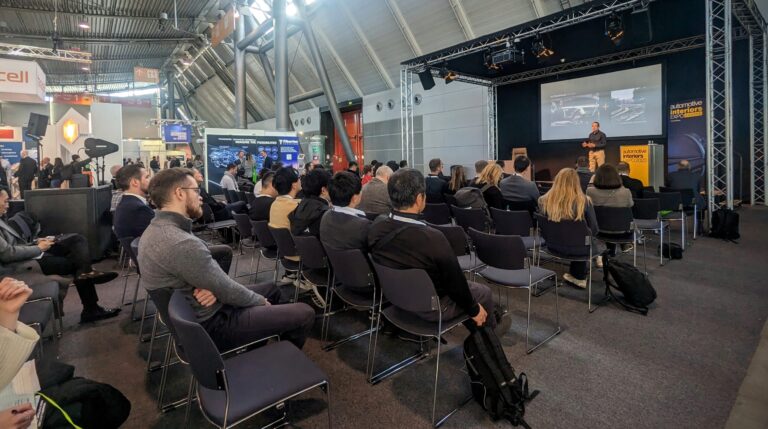In a highly anticipated presentation on Day 1 of Automotive Interiors Expo Europe in Stuttgart, Steve Crijns, senior design manager at McLaren Automotive, revealed more about the company’s interior design philosophy.
“Feeling is a ‘black art’, and design is not an exact science – it’s about creating a feeling of engagement,” he said in an interview at the show. “Engineers do the mathematics, but designers want the car to feel more exciting. But feeling cannot be proved nor measured. Designers have to sell the design within the company first. Developing a design simultaneously with engineering is of the utmost importance. At McLaren we work together and discuss priorities for the best result.
“McLaren supercars are known for their engaging driving experience,” he continued, “but what makes a car engaging to drive, and how can design help with this? How do we make the driver feel at one with the machine?
“My presentation expanded on the unique challenges that come with designing a McLaren interior, such as the specific ergonomics requirements for driving at high speed on a track, and how interiors can make the driving experience more engaging. A sports car is enjoyable to drive because of its performance, but it’s not just about numbers and the engineering and technical side, but also how the power is delivered. When you sit inside and experience the car, it’s about how it feels.
“As a driver you want to feel at one with the machine. The interior is where the driver can truly experience the car and engage with it. Interior design plays an important role here to maximize the connection between the driver and the car.
“One aspect of feeling is creating a generous feeling of space, for instance carving away the surface of the doors as far as possible. We want people to use the cars every day; the cars should be pleasant to use at all times and the feeling of space has a lot to do with that.”
Steve also talked about the future of interior design, challenges such as electrification, and opportunities such as augmented reality and the digital experience. The latter is becoming increasingly important with future demographics. He concluded his presentation with insight into the future challenges for supercars with regard to electrification and legislation, but also the opportunities that autonomous driving and augmented reality can offer to make McLarens even more engaging.
“The future of luxury is customization. Limited-edition, high-end cars are all customized; customers buy a piece of art. When money is no object, they want a car that is unique to them, with bespoke stitch patterns etc. This is going to happen more in the future. The customer journey is as important as buying the car.”
Steve joined McLaren in 2014 and was responsible for the interior design of the 720S. He was the lead designer on the McLaren Speedtail. Before joining McLaren, he was at Lotus Cars for 20 years, where he was responsible for the minimalist interiors on the Lotus Elise and Opel Speedster. He mixed interior with exterior design and was also responsible for the exterior designs of the Evora, Elise mk2, Exige mk2 and Exige mk3 V6. Steve had a background in product design and ergonomics before gaining a master’s degree in vehicle design at the Royal College of Art in London.
It’s not too late to attend the show! Click here to register for your free expo pass




